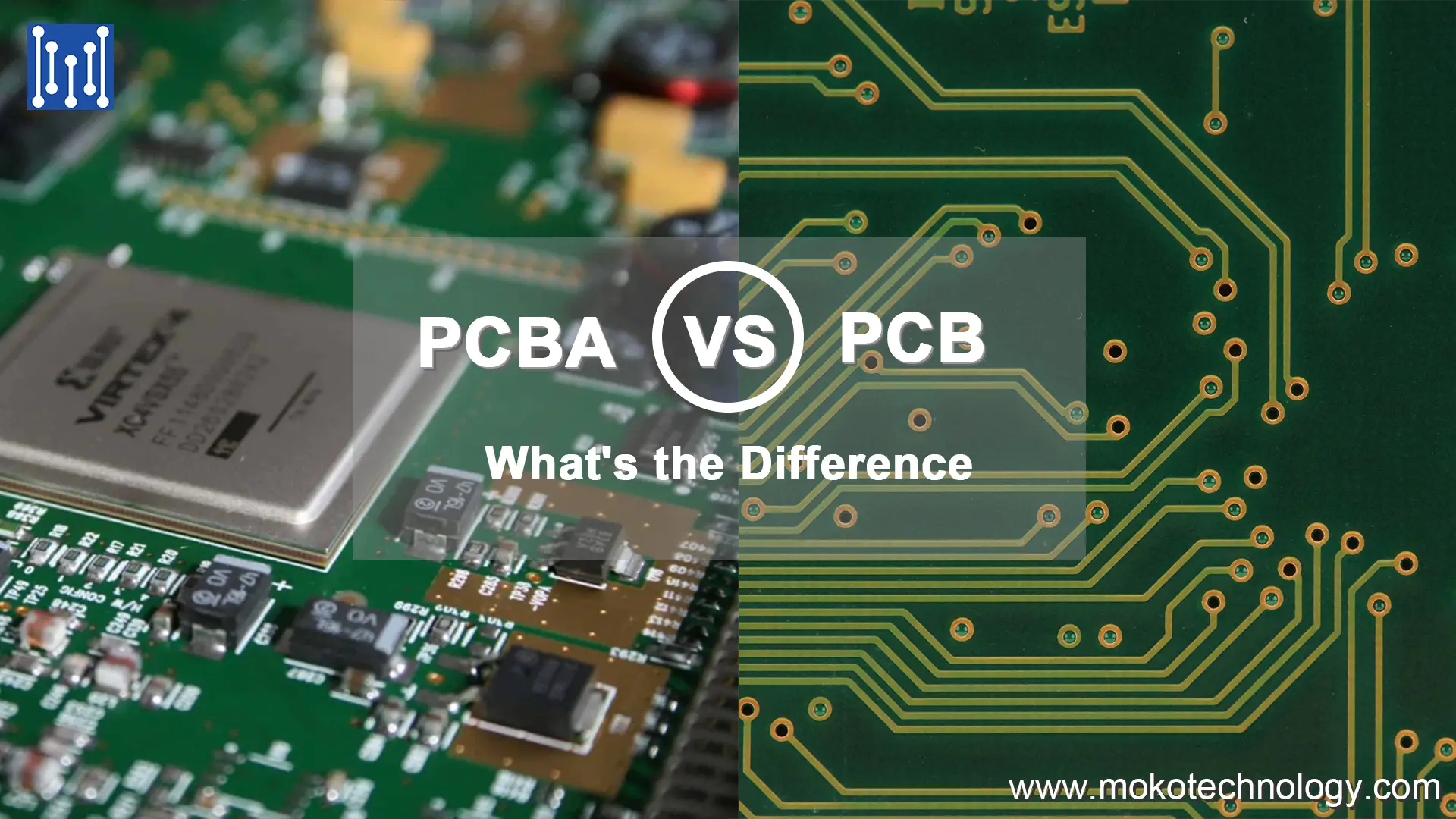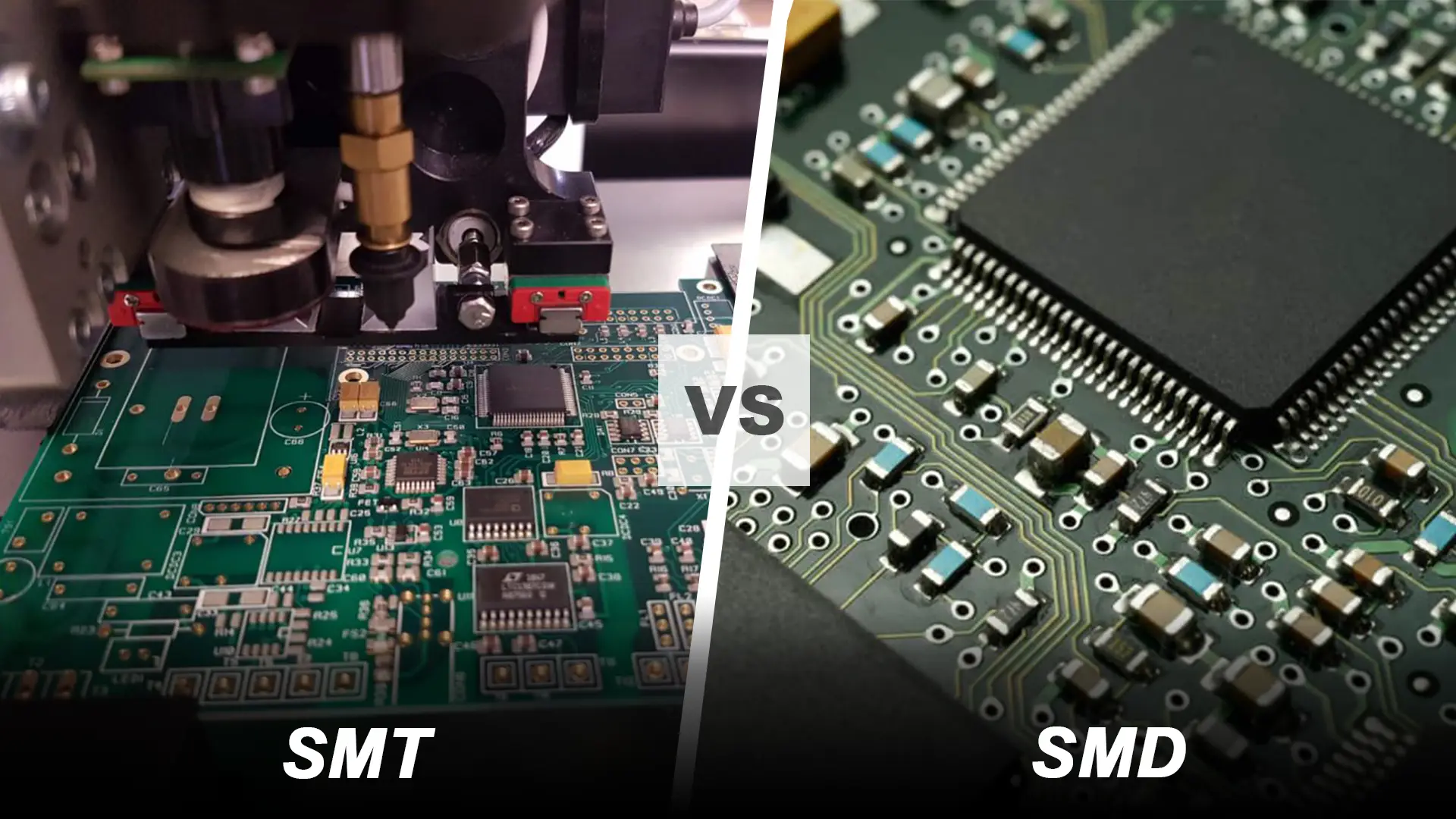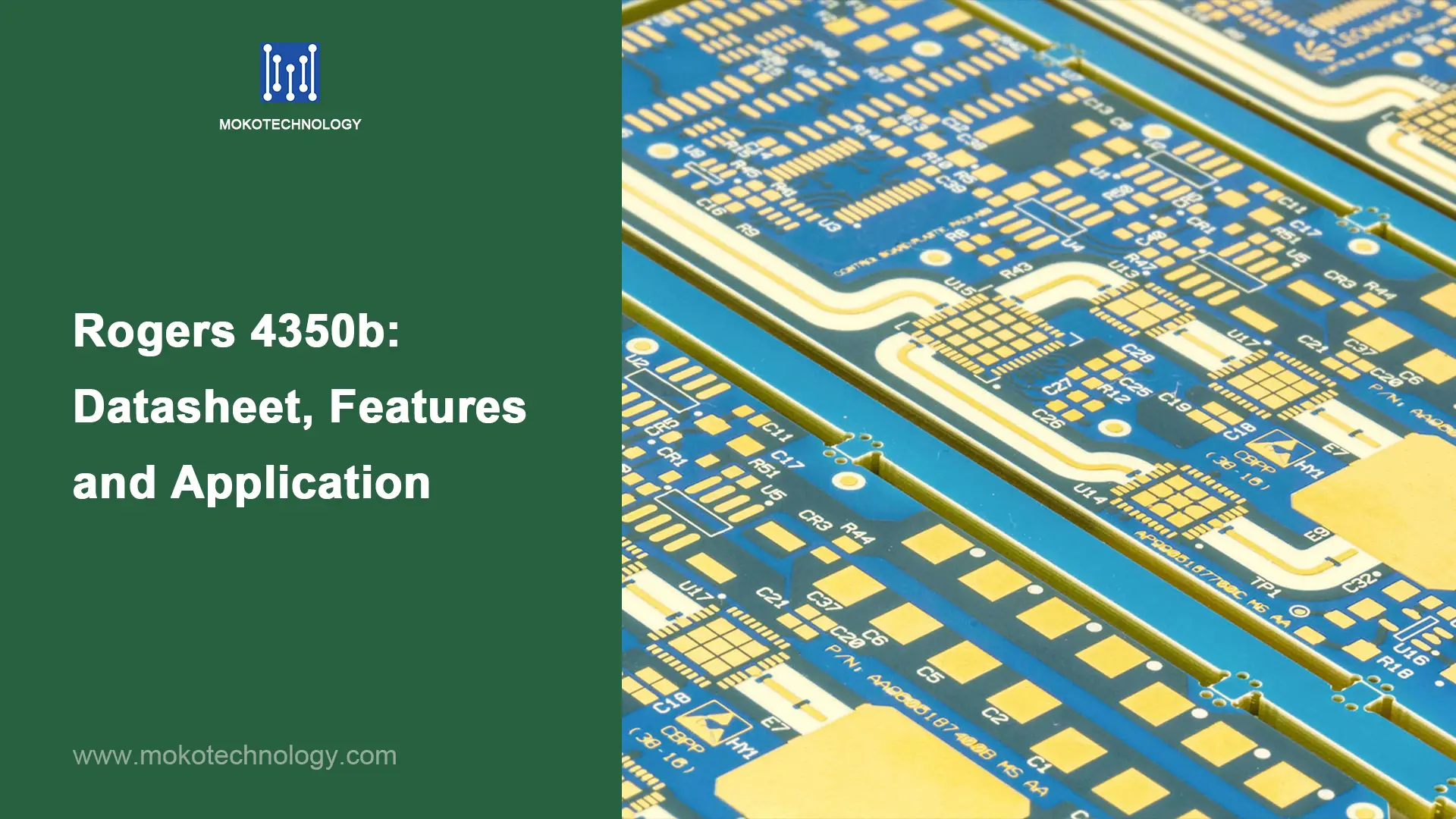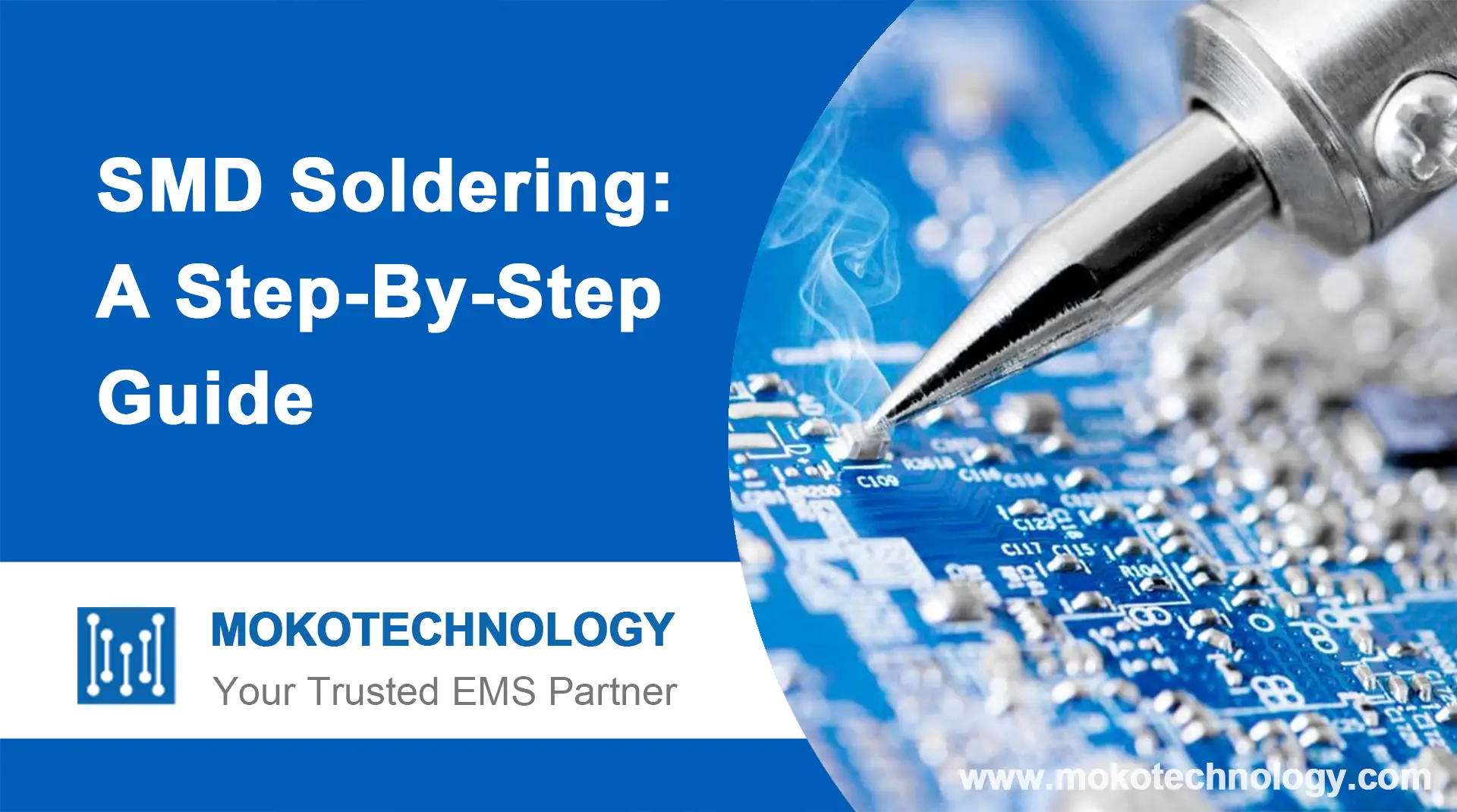PCB y PCBA son los dos términos más comunes en la industria electrónica. Aunque la diferencia entre ellos es solo una letra., representan cosas diferentes. El nombre completo de PCB es Placa de circuito impreso., que se refiere a una placa en blanco sin ningún componente electrónico ensamblado. PCBA significa ensamblaje de placa de circuito impreso, que se refiere a una placa que se ensambla con varios componentes y puede lograr ciertas funciones. PCBA está construido en base a PCB. En este blog, los presentaremos por separado y compararemos sus diferencias en detalle.
¿Qué es una placa de circuito impreso??
tarjeta de circuito impreso (placa de circuito impreso) Es una placa delgada y plana hecha de materiales no conductores que proporciona una base para la estructura mecánica y la conectividad eléctrica de los componentes electrónicos.. Los materiales no conductores utilizados para Sustratos de PCB incluir fibra de vidrio, resina epoxica, u otros materiales aislantes, que permiten grabar o imprimir vías de cobre conductoras sobre su superficie. Estas vías de cobre se conocen como trazas y unen eléctricamente varios componentes de la placa de circuito que están soldados a la PCB. El propósito clave de una placa de circuito impreso es actuar como una plataforma robusta pero liviana para organizar circuitos complejos mediante el montaje de componentes electrónicos en ubicaciones designadas..
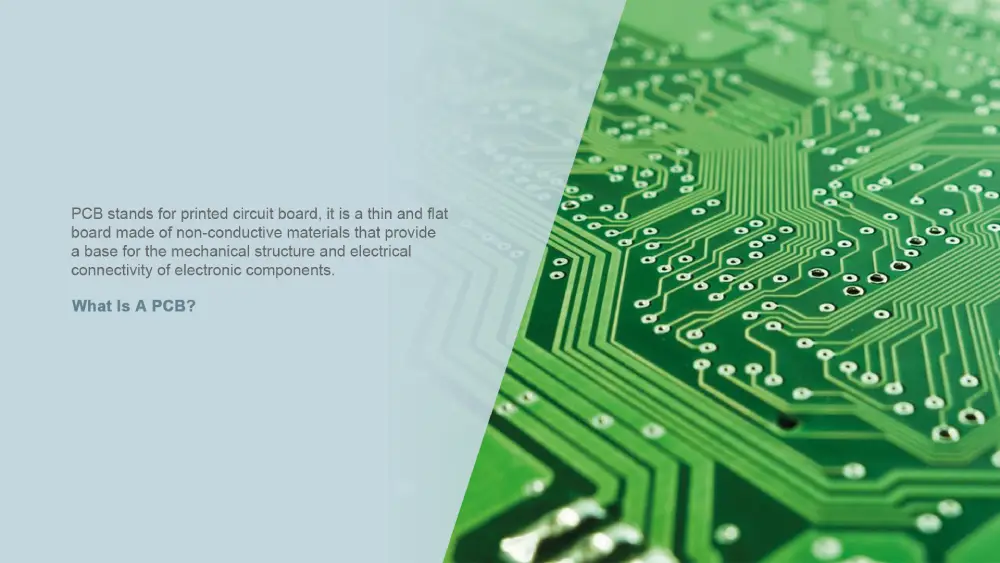
Tipos de placas de circuito impreso
Según el número de capas de cobre conductoras., se puede clasificar como:
PCB de una cara: Como el nombre sugiere, Tienen pistas de cobre en un solo lado del sustrato aislante.. Son baratos y sencillos., utilizado en circuitos básicos.
PCB de doble cara: Estos tienen pistas conductoras en ambos lados del sustrato.. Permitir interconexiones más complejas entre componentes versus un solo lado.
PCB multicapa: Consta de múltiples capas de cobre unidas entre sí., permitiendo circuitos mucho más densos y complejos. Utilizado en electrónica avanzada y permite señales de alta velocidad..
Según los diferentes materiales utilizados, Las placas de circuito impreso se pueden clasificar como PCB de metal., PCB fr4, PCB de cerámica, y así.
Para saber más sobre los tipos de PCB, Flectura adicional: ¿Cuántos tipos de PCB hay?
Composición de PCB
PCB se compone de las siguientes capas:
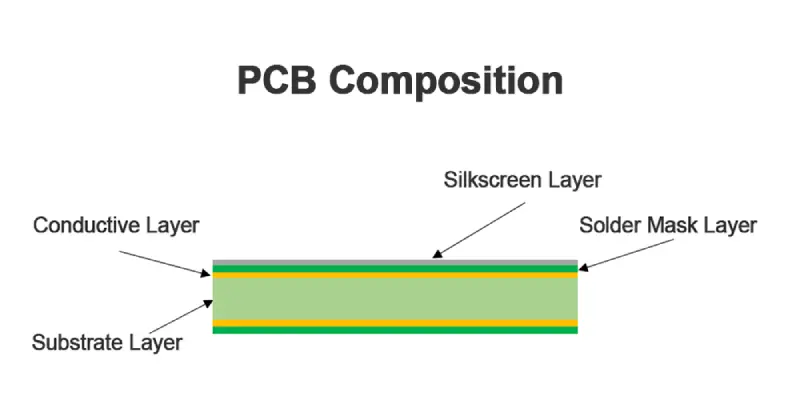
- Capa de sustrato
A menudo se construye con materiales aislantes como el epoxi de vidrio FR-4., cerámica, o compuestos, que sirven como base estructural.
- Capa conductora
La capa conductora consta de una lámina de cobre fijada al sustrato., que luego se graba meticulosamente para crear caminos y puntos de aterrizaje para las interconexiones de circuitos..
- Capa de máscara de soldadura
Es un revestimiento protector a base de epoxi que envuelve la superficie de la PCB., dejando lugares designados para unir componentes y proteger contra cortocircuitos involuntarios.
- Capa de serigrafía
La capa de serigrafía imparte detalles esenciales de los componentes., como etiquetas, logotipos, y contornos del tablero, utilizando tinta o pintura, ayudando tanto en el montaje como en la identificación y resolución de problemas..
¿Qué es una PCBA??
Una PCBA (conjunto de la placa de circuito impreso ) Contiene todos los componentes electrónicos necesarios que proporcionan la funcionalidad de la placa.. Consiste en una placa de circuito impreso., en qué componentes como los circuitos integrados, resistencias, condensadores, Los transistores están soldados.. Piezas adicionales como conectores., botones, También se pueden montar LED. Los cables de los componentes electrónicos están conectados eléctrica y físicamente a las almohadillas de contacto y a las pistas conductoras de la PCB mediante soldadura derretida para formar una unión.. Una vez que todos los componentes estén soldados a la placa y se haya probado su funcionamiento adecuado, se llama PCBA. Los PCBA son un paso esencial en la fabricación de productos electrónicos, Diseñado y ensamblado por empresas de servicios de fabricación de productos electrónicos antes de ensamblar el producto final..
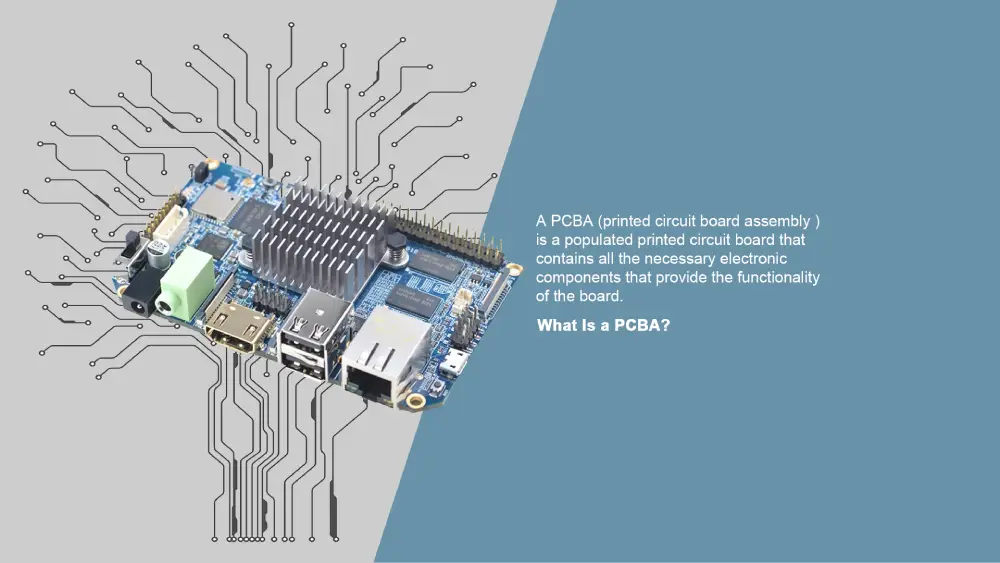
Diferentes métodos de ensamblaje de PCB
Basado en diferentes técnicas de montaje., PCBA se puede dividir en 3 tipos:
- PCBA SMT
SMT (Tecnología de montaje superficial) Usos de PCBA componentes de montaje en superficie que se sueldan directamente sobre la superficie de la PCB sin ningún agujero. Los componentes son pequeños, Permite un embalaje de alta densidad y hace que el tablero sea compacto.. Este proceso está automatizado..
- PCBA
THT (Tecnología de orificio pasante) Los PCBA utilizan componentes con terminales con clavijas que se insertan en orificios perforados en el PCB.. Los cables que sobresalen están soldados en el lado opuesto.. Los componentes de gran tamaño se ensamblan manualmente..
- PCBA de tecnología mixta
Los PCBA mixtos utilizan tanto SMT como Componentes THT soldado en el mismo PCB. Las piezas de montaje en superficie más pequeñas se combinan con piezas de orificio pasante más grandes que necesitan resistencia mecánica.. Esto aprovecha ambas tecnologías en una sola placa.. El montaje implica soldadura tanto automática como manual..
¿Cuál es la diferencia entre PCB y PCBA??
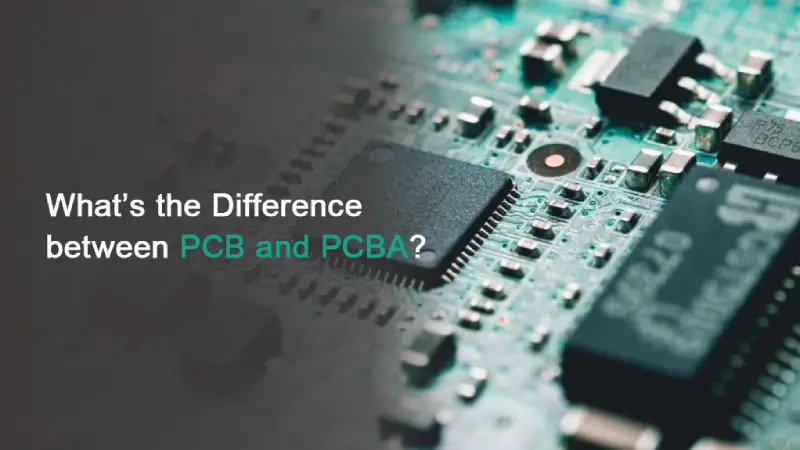
- Proceso de manufactura
La fabricación de PCB gira en torno a la elaboración del placa de circuito desnudo sí mismo, que involucran tareas como diseñar el diseño del tablero, grabado de rastros de cobre, y añadiendo capas aislantes. Este proceso suele estar automatizado y caracterizado por una alta precisión.. A diferencia de, PCBA toma la PCB como punto de partida y procede a poblarla con componentes y conectores electrónicos.. PCBA puede ser un proceso de ensamblaje manual o automatizado, dependiendo de la escala y complejidad del proyecto.
- Componentes y complejidad
Los PCB constan únicamente de una placa desnuda con trazas de cobre., sin ningún componente electrónico poblado en ellos. Mientras que los PCBA incorporan una variedad de componentes electrónicos ensamblados en el PCB mediante soldadura. Esto transforma la placa desnuda en un sistema electrónico funcional., con una complejidad que va desde ensamblajes simples hasta arreglos densos con muchos componentes y circuitos integrados.
- Consideraciones de costo y tiempo
La fabricación de PCB es generalmente más rentable y eficiente en términos de tiempo en comparación con el ensamblaje de PCB.. Los costos de PCB son menores debido a un diseño más simple y gastos de material.. PCBA implica mayores costos para componentes y procesos de ensamblaje que requieren mucha mano de obra. Adicionalmente, Los plazos de entrega de PCBA son más largos debido a la integración de componentes y las pruebas exhaustivas requeridas..
| Características | tarjeta de circuito impreso | PCBA |
| Componentes | Tablero desnudo con restos de cobre. | Incluye varios componentes electrónicos. |
| Funcionalidad | Proporciona una plataforma para componentes. | Resultados en un dispositivo electrónico funcional |
| Fabricación | Concéntrese en crear la propia placa de circuito impreso desnuda. | toma la base de PCB desnuda y se basa en ella agregando componentes electrónicos. |
| Costo | Más bajo | Más alto |
| Tiempo | Plazos de entrega cortos | Plazos de entrega más largos |
| Composición | sustrato, capa conductora, taladrar agujeros, máscara para soldar, serigrafía. | tarjeta de circuito impreso, componentes electrónicos, conexiones de soldadura |
PCB frente a PCBA: Cuándo utilizar PCB? Cuándo utilizar PCBA?
Determinar si utilizar una PCB o una PCBA completamente ensamblada depende de las necesidades de su proyecto y del enfoque de producción.. Si solo necesita la placa de circuito fundamental para desarrollarla más adelante, una PCB desnuda probablemente sea adecuada, permitiendo personalización y flexibilidad en la integración de componentes. sin embargo, si desea un ensamblaje electrónico listo para usar sin necesidad de obtener ni soldar componentes, es preferible una PCBA, ya que ahorra tiempo de desarrollo y montaje. Para proyectos de bricolaje sencillos con pocos componentes que quieras elegir tú mismo, Los PCB desnudos ofrecen flexibilidad para la creación de prototipos. Pero para proyectos complejos con plazos ajustados, Los PCBA pueden ser la mejor solución para acelerar el desarrollo.
La decisión también depende del volumen de producción. – Los PCBA son ideales para la producción en masa, mientras que los PCB desnudos tienen sentido para la creación de prototipos de bajo volumen.. Para montaje DIY de PCBA simples, puede soldar componentes en PCB diseñados a medida. Pero para PCBA complejos, Se recomienda trabajar con un fabricante profesional de PCBA.. Si busca orientación experta para su próximo proyecto o necesita ayuda para elegir el servicio adecuado entre PCB y PCBA, no dudes en Contáctenos.
